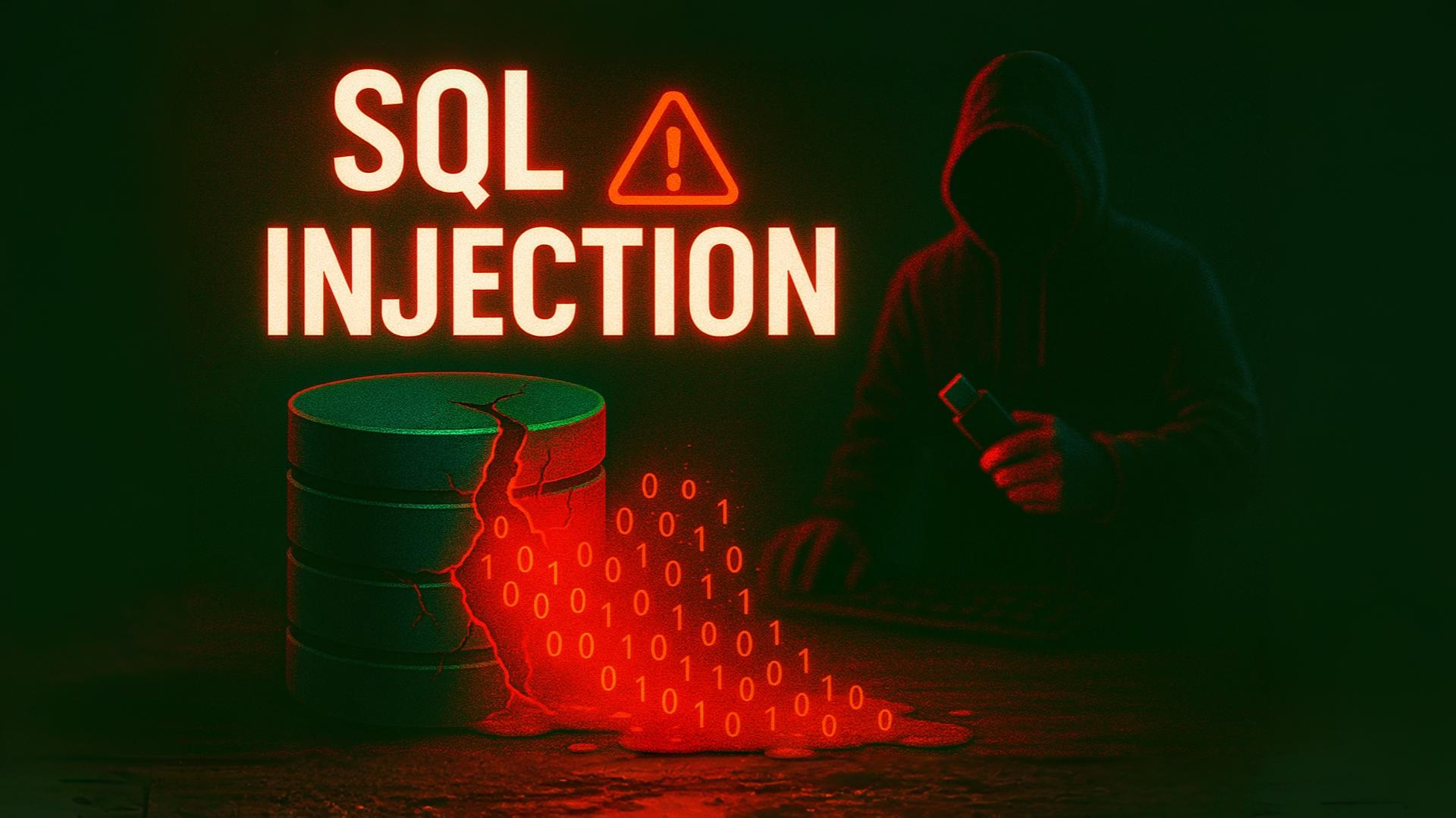EXPOSED: The Digital Back Door Criminals Are Using RIGHT NOW to Steal Your Data!
 YuvaSec
YuvaSec
Introduction
Ever wonder how a single malicious code snippet could compromise millions of personal records?
In today's world where data is basically gold, understanding SQL injection is critical. SQLi remains one of the most common and destructive vulnerabilities around - it can leak confidential data, disrupt operations, and damage reputations.
Let's explore what SQL injection is, why it matters, and how to prevent it, so you can keep your web applications and data from falling into the wrong hands.
1. Understanding SQL Injection

SQL injection is a web vulnerability that enables attackers to take over the queries an application makes to its database. Injecting malicious SQL code into input fields (login fields, search fields) enables attackers to bypass authentication, steal sensitive data, or even take over an entire server.
Why SQL Injection Matters Now
Escalating Cyber Threats: As more businesses move operations online, databases storing customer data become prime targets for hackers.
High Impact: Successful attacks can lead to massive data breaches, financial fraud, and brand damage.
Easy Entry Point: Attackers often rely on automated tools, making even minor vulnerabilities a magnet for exploits.
2. Common Attack Vectors & Techniques

Attackers often start by entering a single quote (') into input fields to test for syntax errors. If the application reveals an SQL error, it’s a strong indicator of vulnerability. From there, hackers can try various methods:
In-band (Classic) SQLi
Error-based SQLi: Triggers database errors to reveal information (like table structures).
Union-based SQLi: Combines result sets using the
UNIONoperator, extracting sensitive data from other tables.
Blind SQLi
Boolean-based: Observes how web pages change when an injected statement is true or false.
Time-based: Causes timed delays to infer whether a condition is met.
Out-of-band SQLi
- Uses alternate channels (DNS, HTTP requests) to send data back to attackers, often if direct error messages are suppressed.
3. Potential Impacts of SQL Injection

Data Exfiltration: Attackers can read sensitive data, including personal identifiers and financial records.
Data Manipulation: Insert, update, or delete records, leading to corruption or fraud.
Privilege Escalation: If administrative accounts are compromised, the attacker can control the entire database.
Complete System Takeover: Some SQL injection attacks allow execution of commands at the operating system level.
4. Secure Coding Practices & Preventative Measures

Defending against SQL injection requires a holistic approach:
Input Validation
Implement whitelisting rules to allow only expected characters or formats.
Reject or sanitize malformed inputs that deviate from these rules.
Parameterized Queries (Prepared Statements)
Separate SQL commands from user-provided inputs.
Even if a user submits malicious SQL code, it’s treated purely as data and not executed.
Stored Procedures
- Can limit direct user interaction with SQL if properly parameterized.
Least Privilege Principle
Use dedicated, minimal-permission database accounts.
Never connect via admin or root credentials for routine operations.
Web Application Firewalls (WAFs)
- Filter incoming requests, blocking known malicious patterns.
Disable Detailed Error Messages
- Prevent valuable information about your database structure from leaking through error messages.
5. Step by Step How Hackers Do It

Knowing the attacker’s perspective can bolster your defenses:
Reconnaissance
Identify websites with user input forms, login pages, or dynamic URL parameters.
Gather information about server types, frameworks, and potential vulnerabilities.
Vulnerability Scanning
Utilize tools like SQLMap or Burp Scanner to probe for SQL error responses.
Inject symbols like
'to see if the database returns syntax errors.
Payload Crafting
Develop malicious queries to bypass authentication or retrieve data.
Example:
user: ' OR '1'='1 --can grant unauthorized login access.
Injection & Refinement
Insert the malicious payload into the vulnerable field or parameter.
Analyze results and refine queries (e.g., using
UNIONorSLEEP()for blind injection).
Data Extraction / System Exploitation
Retrieve sensitive data, alter records, or escalate privileges.
Potentially install backdoors for ongoing access.
Covering Tracks
- Clear logs, use proxies or VPNs to mask IP addresses, and remove visible traces of the attack.
Case Studies
Real-world incidents underscore the gravity of SQL injection:
Heartland Payment Systems (2008)
What Happened: Attackers exploited a web application flaw via SQL injection, stealing over 130 million credit card records.
Impact: Massive financial repercussions and reputational damage.
Sony Pictures (2011 & 2014)
What Happened: LulzSec and the “Guardians of Peace” exploited SQL injection vulnerabilities to pilfer confidential data and leak unreleased films.
Impact: Damaged public trust and caused significant operational disruption.
Equifax (2017)
What Happened: SQL injection flaws contributed to unauthorized access to ~147 million records.
Impact: Costly legal settlements and a major loss of consumer confidence.
These cases highlight how SQL injection remains a persistent and lucrative tactic for cybercriminals.
conclusion
SQL injection is not an abstract threat—this is a very real, present threat that has facilitated some of the biggest-ever data breaches in history. By using secure coding practices (parameterized queries and good input validation) and good security controls (firewalls, least-privilege practices, and routine patching), you can go a long way toward mitigating your risk. As threats continue to evolve on the web, vigilant awareness, employee education, and regular testing are now necessities. Keeping your data secure begins with a secure foundation—presume all user input is untrusted, and never presume it's safe.
Further Reading
OWASP SQL Injection Prevention Cheat Sheet – owasp.org
SQLMap Official Documentation – sqlmap.org
PortSwigger Web Security Academy – portswigger.net
Acunetix SQL Injection Guide – acunetix.com
NIST Guidelines on Application Security – nvlpubs.nist.gov
Subscribe to my newsletter
Read articles from YuvaSec directly inside your inbox. Subscribe to the newsletter, and don't miss out.
Written by

YuvaSec
YuvaSec
Cybersecurity Enthusiast | Ex-Mechanical Engineer | Lifelong Learner Pivoting into InfoSec On a mission to build skills, break stuff (ethically), and land a job in cybersecurity.